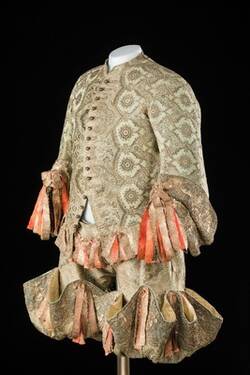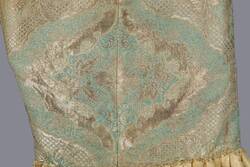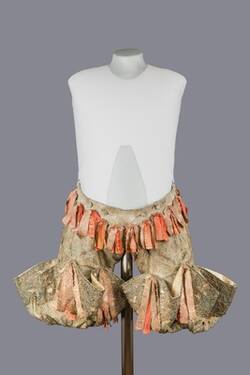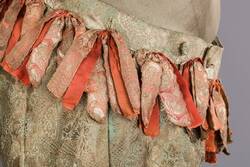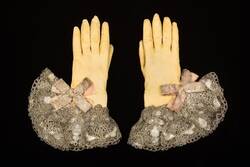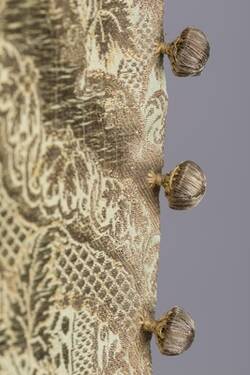The Rhinegrave dress occupies a special place among the contents of August the Strong’s wardrobe. It’s a costume that harks back to the past, to the Rhinegrave style of the previous century. By wearing it, the king was slipping into the shoes of his great role model, Louis the Fourteenth of France. August first wore the dress to attend the French comedy during the celebrations for the electoral prince’s wedding to the emperor’s daughter, which took place in Dresden in 1719.
Around half a century earlier, the Sun King had ensured that the Rhinegrave style, with its lavish trim of ribbons, bows and lace, found acceptance at court. The name probably goes back to Karl Florentin Rhinegrave of Salm, the Dutch ambassador to the French court. He first appeared in this style of dress in around 1660. The Rhinegrave fashion, as celebrated by Louis the Fourteenth, was captured in paintings, vast tapestries and prints. August the Strong may have committed those images to memory during his time at the French court while he was on his Grand Tour in 1687 and ‘88. On the entrance wall of the exhibition hall, you’ll find a painting entitled "King Louis the XIV of France on his Way to Vincennes". Take a look at it to see costumes like this one.
August the Strong took two years to prepare for his appearance in this dress. In 1717, he dispatched his valet de chambre Montargon to Paris. The man had explicit orders to acquire the pattern of a costume the French king had worn on the most solemn of ceremonial occasions – his wedding, for instance.
In Dresden, the costume inspired by the Rhinegrave style was recreated using the fashionable silk fabrics and accessories from France. The impressive ensemble has come down to us in the Armoury and is complete, consisting of doublet, knee-length breeches, circular cloak and gloves. In the pale blue-and-silver silk fabric with lace pattern, the poppy-red and silver silk ribbons and the opulent silver lace, August the Strong cut a fantastic figure.
Weitere Medien
- Ort & Datierung
- Dresden. 1718-1719. Oberstoff/Schleifenbänder französisch. Schneiderarbeit sächsisch
- Material & Technik
- Oberstoff: Lampas mit Spitzenmuster, fassongewebt; Grund Gros des Tours in Seide hellblau, lanciert mit Seide lachsrot, broschiert mit Silbergespinst, teils als Frisé; im Bereich der Spitze Lamé von Seide creme und Silberlahn; Taschenfutter: Leinen creme, gewachst; gemusterte Bandschleifen: Seide lachsrot und Silbergespinst, teils als Frisé; einfache Bandschleifen: Seidenrips lachsrot (ponceau); Knöpfe: Holz, mit Silbergespinst überlegt, flache Knöpfe bezogen mit Lampas wie Oberstoff.
- Abmessungen
- Saumumfang 595 cm Durchmesser quer 224 cm Seitenlänge rechts 104,5 cm Seitenlänge links 104,5 cm VM Vorderlänge (ohne Kragen) 97 cm HM Rückenlänge (ohne Kragen) 93 cm Außenweite Kragen 51 cm VM Kragenhöhe 12,5 cm HM Kragenhöhe 6,5 cm
- Museum
- Rüstkammer
- Inventarnummer
- i. 0030.01

